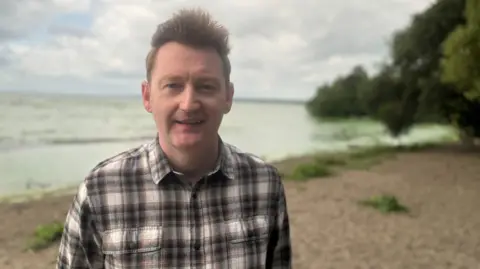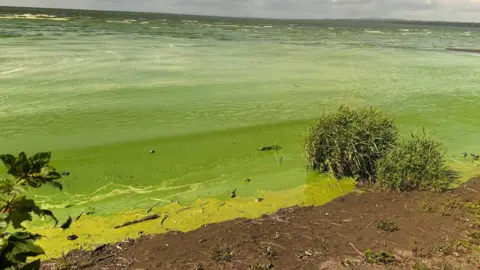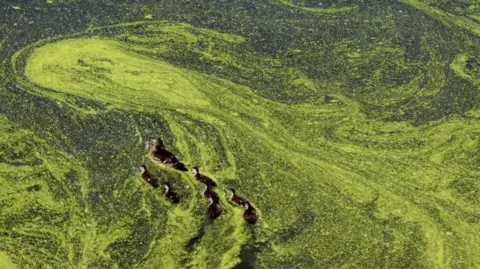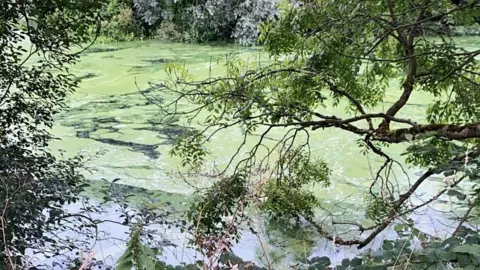Blue-green algae could pose serious 'health risks'
 BBC
BBCBlue-green algal blooms in Lough Neagh could have a profound ecological impact and present potentially significant environmental and public health risks, researchers at Queen’s University Belfast (QUB) have found.
Their work has confirmed the lough’s hypertrophic status – the worst category of waterway nutrient pollution.
More than 80% of the bacterial DNA tested from algal mats belonged to potentially hazardous microbes, including E.coli, salmonella and 11 others that can cause human illness.
The scientists tested samples from mats of algae at Toome Lock, Rea’s Wood, Antrim Boathouse and Ram’s Island in the East of the Lough in 2023.

Large array of toxins
They found the samples to be “dominated” by bacteria associated with wildfowl or livestock faeces or human-effluent wastewater treatment.
And they detected a large array of toxins, including one that has not been discovered on the island of Ireland before.
 QUB
QUBFarmers have key role in addressing issues
 QUB
QUBDr Neil Reid from the Institute of Global Food Security at the school of biological sciences in QU, was the lead author of the report, said farmers had a key role in addressing the problem.
“Technological solutions to better use slurry, for example, through anaerobic biodigestion, as well as good on-farm wastewater management is needed urgently on most farms," he said.
“So-called ‘nature-based solutions’ such as planting vegetation and leaving buffer strips along waterways or creating drainage swales, willow plantations and reedbeds could dramatically reduce the environmental footprint of farming avoiding any conflict with the productivity and profitability of the agriculture sector.”

He called for government to support a “just transition” for the agricultural sector, through agri-environment subsidies.
“Recent national and local political change should foster optimism that the environment and opportunities for change now exist," he said.
The study, published in the journal Environment International, found the hazardous algal bloom (HAB) that developed in 2023 was “an unprecedented environmental perturbation to an internationally important ecosystem”, likely due to a combination of excess nutrient in the water, climate change and the effects of invasive species.
It says “significant investment” would be needed in wastewater infrastructure and in-lake remediation strategies.
A Lough Neagh action plan is in place to address the challenges facing the largest body of freshwater in these islands.
It includes a research programme to test potential solutions to the blue-green algal crisis.
